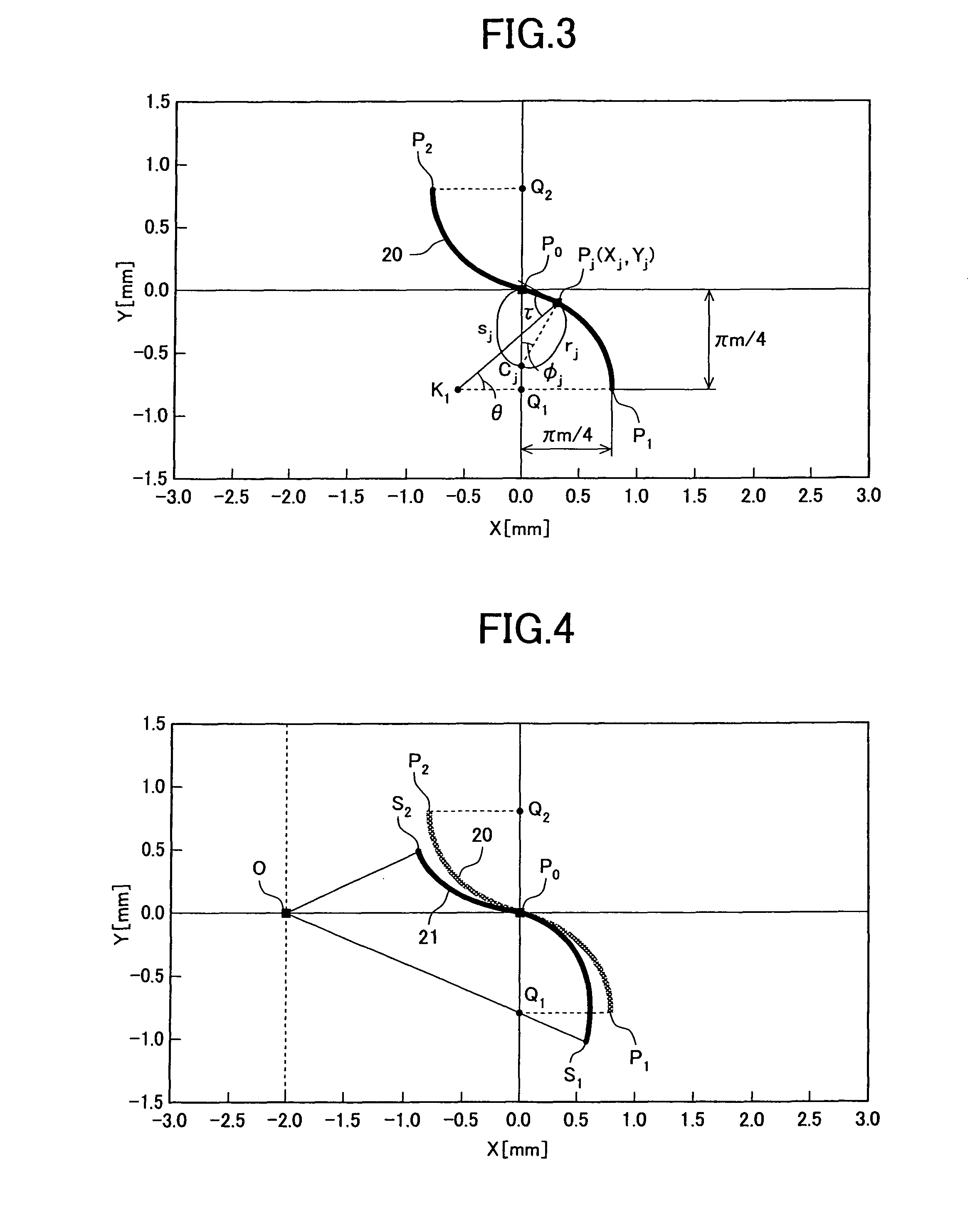Positive displacement flowmeter and helical gear
a flowmeter and helical gear technology, applied in the direction of instruments, liquid fuel engines, machines/engines, etc., can solve the problems of inability to realize an idea, disadvantageous low tooth height ratio, and use the oval pitch curve as a reference, etc., to achieve sufficient tooth profile strength, high tooth surface strength of the gear tooth profile, and small specific sliding between the tooth profiles
- Summary
- Abstract
- Description
- Claims
- Application Information
AI Technical Summary
Benefits of technology
Problems solved by technology
Method used
Image
Examples
first embodiment
[0041]The helical gears 1, 2 according to this embodiment are helical gears that employ an oval pitch curve having two or less leaves as a curve for their reference rack tooth profile. The moving radius of the oval pitch curve is expressed by Equation (1) below.
ρ=a / (1−b cos nθ) Eq. (1)
In Equation (1), “ρ” is the moving radius that is the distance from the center of the rotation to the oval pitch curve, “a” is a similarity factor, “b” is the degree of flatness, “n” is the number of leaves, and “θ” is the argument (the angle of the moving).
[0042]A locus of the reference rack tooth profile will hereinafter be represented by (Xj, Yj), and the case where a two-leaf oval pitch curve (n=2) is used as the curve for this reference rack tooth profile will be described as a representative example. Here, the pitch circle radius “R”, the number of teeth of the gear “Z”, a tooth profile module “m”, and a ¼ reference pitch “S0” are given below.[0043]The pitch circle radius R=2[0044]The number of ...
second embodiment
[0070]A reference rack tooth profile of this embodiment has the amount of movement of the pole g0=0, and therefore, it is different from the reference rack tooth profile of the first embodiment, the pole of the oval pitch curve is on the pitch line and is configured by providing a straight line section in the vicinity of the pitch point of the reference rack tooth profile.
[0071]Representing the locus of the reference rack tooth profile as (Xj, Yj), the case where a two-leaf oval pitch curve (n=2) is employed as the curve for the reference rack tooth profile will be described as a representative example. Similarly to the first embodiment, the pitch circle radius “R”, the number of teeth of the gear “Z”, a tooth profile module “m”, and a ¼ reference pitch “S0” are given below.[0072]The pitch circle radius R=2[0073]The number of teeth of the gear Z=4[0074]The tooth profile module m=2R / Z=1[0075]The ¼ reference pitch S0=π m / 4=πR / 2Z
[0076]The polar coordinates (ρ, θ) of the two-leaf (n=2) ...
PUM
 Login to View More
Login to View More Abstract
Description
Claims
Application Information
 Login to View More
Login to View More - R&D
- Intellectual Property
- Life Sciences
- Materials
- Tech Scout
- Unparalleled Data Quality
- Higher Quality Content
- 60% Fewer Hallucinations
Browse by: Latest US Patents, China's latest patents, Technical Efficacy Thesaurus, Application Domain, Technology Topic, Popular Technical Reports.
© 2025 PatSnap. All rights reserved.Legal|Privacy policy|Modern Slavery Act Transparency Statement|Sitemap|About US| Contact US: help@patsnap.com



